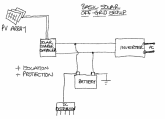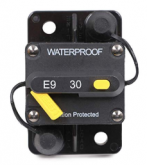tucsonsolar
New Member
- Joined
- Feb 25, 2020
- Messages
- 24
Hello.....new to all this....
Putting in an MPP 2424 inverter with the following specs...
It has a Max PV Array Input of 145V DC and a Rated power of 2000 W. My array would be 4-327 W panels, so well under the rated power listed.
Panels I'm considering are Max Power Voltage - 54.7V and Open Circuit Voltage of 64.9. Don't know which one should be used for calculations, so I defaulted to the higher....
If the panels are mounted in series, I can only do 2 at a time, coming in at 129.8 input voltage coming from 2 panels.
Question - can 2 sets of 2 panels be combined in a serial fashion and then just connected through something like an MC4 connector to hook into the inverter and would this be safe or would this combine the 2 sets of serial voltages and exceed the input max of the inverter?
What would be the easiest (smartest) way to connect this set of 4 panels? I've bought the BigBattery 24v powerwall lithium system and just want to power a few appliances in the house and have a backup in case of emergency....Would a complete parallel configuration make more sense? I always plan to have grid backup unless it's not available to keep batteries charged.....
The wiring of this is just getting me stuck....I would also appreciate any help with ideas on the wiring and parts needed to assemble this in the most sensible and easy to accomplish fashion...
Thanks! Michael in Tucson....PS - if there's any locals, I'd buy lunch for a bit of help....
Putting in an MPP 2424 inverter with the following specs...
It has a Max PV Array Input of 145V DC and a Rated power of 2000 W. My array would be 4-327 W panels, so well under the rated power listed.
Panels I'm considering are Max Power Voltage - 54.7V and Open Circuit Voltage of 64.9. Don't know which one should be used for calculations, so I defaulted to the higher....
If the panels are mounted in series, I can only do 2 at a time, coming in at 129.8 input voltage coming from 2 panels.
Question - can 2 sets of 2 panels be combined in a serial fashion and then just connected through something like an MC4 connector to hook into the inverter and would this be safe or would this combine the 2 sets of serial voltages and exceed the input max of the inverter?
What would be the easiest (smartest) way to connect this set of 4 panels? I've bought the BigBattery 24v powerwall lithium system and just want to power a few appliances in the house and have a backup in case of emergency....Would a complete parallel configuration make more sense? I always plan to have grid backup unless it's not available to keep batteries charged.....
The wiring of this is just getting me stuck....I would also appreciate any help with ideas on the wiring and parts needed to assemble this in the most sensible and easy to accomplish fashion...
Thanks! Michael in Tucson....PS - if there's any locals, I'd buy lunch for a bit of help....




